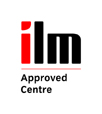Preparation for Presentation
Ready, Set, PRESENT!
 You are standing in front of the crowd about to give your presentation. You feel those familiar butterflies in your stomach and wonder if your presentation will be a success? Is a presentation just a PowerPoint slide show? Follow these simple tips to ensure your presentation will be a success.
You are standing in front of the crowd about to give your presentation. You feel those familiar butterflies in your stomach and wonder if your presentation will be a success? Is a presentation just a PowerPoint slide show? Follow these simple tips to ensure your presentation will be a success.
The term ‘presentation’ can be referred as to one of the followings:
- Demonstration
- Tutorial
- Group discussion
- Lecture
- Lesson with a structure
- Role play
- Individual instruction
The key to a successful presentation is the preparation beforehand.
When giving presentations most individuals make the common mistake of not identifying the learning styles of their audience and choose to deliver the session to their preference. When this occurs the audience fails to acknowledge the information given during the lecture rendering the presentation overall to be ineffective and unsuccessful.
It is essential to understand the different learning styles and be able to identify those to that of your audience. Many presenters use different methods to suit each individual’s learning method, or a combination of a few. For example they may start with a demonstration followed by a structured session then role play to consistently engage focus. Some individuals have more than one learning style. There are a variety of learning styles however the 4 main learning styles are:
-
Activist
-
Theorist
-
Pragmatist
-
Reflector
How to prepare effectively for a presentation
It is essential the presenter is well prepared and learned in the subject he or she is going to present. A basic outline of the lesson/presentation would be advisable. By following the outline you can keep track of covering vital points you wish include in your presentation.
Consider which learning style is best suited for individuals at hand and present the information using this basis. Remember to include activities which involve the audience. By including such activities not only are you connecting with the participants but also ensuring the material presented is being absorbed.
A quick run through of your presentation is always needed as well as an overall check of the equipment prior to the session. You should also verify the audience’s ability or knowledge to ensure the material is delivered is at the right pitch. Good eye contact is important so the presenter can read cues from the students and keep them focused. You can use body language e.g. non verbal cues such as hand gestures as you present. With good preparation you can’t go wrong – Best of Luck.
 This article was written by Gill Tate, Youth & Career Coach, Striding Out
This article was written by Gill Tate, Youth & Career Coach, Striding Out
Need Help?
Our business coaches are here to help. Find out more about our business coaching services or email us at [email protected] to arrange a chat with one of our coaches.





